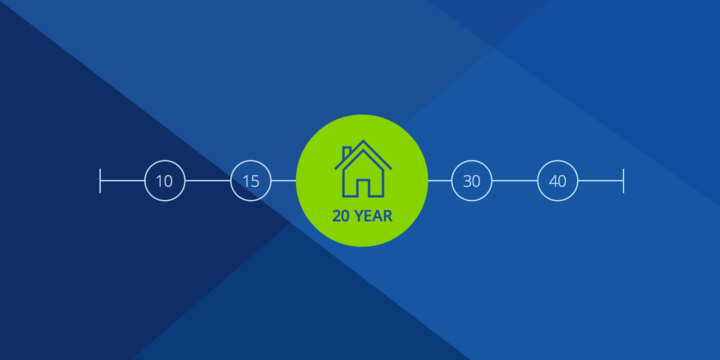Conforming Loan Limits for 2026


Written by Vivian Tejada on December 2, 2025
Reviewed by Neil Swanson, Edited by Jessica Rapp
Each year (usually in November), the Federal Housing Finance Agency (FHFA) sets new maximum loan limits a consumer can borrow for a conventional loan. This limit is known as a conforming loan limit (CLLs). Anything above conforming loan limits is considered a jumbo loan. Conforming loan limits are a federal tool designed to ensure the housing market is sustainable year after year. The 2026 conforming loan limit for one-unit properties in most of the U.S. is $832,750, up $26,250 from 2025. In areas considered high-cost, the limit increased to $1,249,125 — $39,375 more than last year.
In this article, we’ll discuss the conforming loan limits for 2026. We’ll also cover how conforming loan limits impact different types of mortgages, and what to do if your financing needs exceed the conforming loan limit in your area.
What is a conforming loan limit?
Conforming loan limits are the maximum borrowing amount on a mortgage that can still be purchased by Fannie Mae and Freddie Mac — the two main enterprises that purchase and insure mortgages in the U.S. Fannie Mae and Freddie Mac buy mortgages from lenders, bundle these mortgages into mortgage-backed securities, and sell these securities to investors on the secondary market to provide lenders with the liquidity they need to continue offering home buyers affordable mortgage loans.
Since Freddie Mae and Freddie Mac can only purchase mortgage loans that fall within conforming loan limits, lenders typically offer mortgages at or below conforming loan limits, which naturally limits how much you can borrow with a conventional or government-backed mortgage.
Check out our conforming loan options from Zillow Home Loans*.
How do conforming loan limits work?
The FHFA uses median home values across the country to determine the conforming loan limits for each U.S. county. Although most counties are assigned the baseline conforming loan limit, CLLs are often higher in more expensive counties. Areas with a high cost of living, such as New York City, have higher maximum conforming loan limits.
Mortgages insured by the federal government are impacted differently by conforming loan limits than conventional mortgages. Here’s how conforming loan limits impact FHA, USDA, and VA loans.
FHA loan limits
FHA loans follow adjusted conforming loan limits. Instead of assigning loan limits by county, the FHA assigns loan limits by metropolitan statistical area, or MSA. Throughout most of the country the FHA loan limit is 65% of the baseline conforming loan limit. In 2026, the FHA loan limit is $541,288 for a single-unit property.
In high-cost areas like New York City, the FHA loan limit is 150% of the baseline conforming loan limit, or $1,209,750 for a single-unit property. View the most recent conforming FHA loan limits for 2026.
USDA loan limits
USDA loans are reserved for low- to moderate-income buyers living in specific rural areas. Some of these loans are guaranteed by the U.S. Department of Agriculture, while the USDA directly funds others. Loans guaranteed by the USDA don’t need any borrowing limits, because low- and moderate-income borrowers will only qualify for loans below the CLL. Loans directly funded by the USDA have area loan limits between $419,300 and $967,800 for single-family homes in 2025.
VA loan limits
In many cases, conforming loan limits don’t apply to VA loan borrowers. The Department of Veteran Affairs doesn’t place a loan limit on veterans and other eligible borrowers with full entitlement. However, borrowers with limited entitlement will need to follow the VA conforming loan limits in their area.
2026 conforming loan limits
View the most current 2026 conforming loan limits for 1-4 unit properties in the table below.
| Property Type | Low-cost areas | High-cost areas | Hawaii (high-cost) |
|---|---|---|---|
| 1 unit | $832,750 | $1,249,125 | $1,299,500 |
| 2 units | $1,066,250 | $1,599,375 | $1,633,600 |
| 3 units | $1,288,800 | $1,933,200 | $2,010,950 |
| 4 units | $1,601,750 | $2,402,625 | $2,499,100 |
What if you want to buy a home that exceeds the conforming loan limits?
For the average buyer, purchasing a home within conforming loan limits is wise. At the end of the day, you don’t want to borrow more than the home is worth, or more than you can afford. However, buyers who have the financial means to purchase a more expensive home can explore jumbo loans as an alternative financing option.
Jumbo loans are conventional mortgages that exceed the CLL in their county. Jumbo loans are not insured or bought by Freddie Mae or Freddie Mac, making them riskier for lenders. To compensate for higher risk, jumbo loans go through a more stringent underwriting process than conforming loans. Here’s what you need to know about buying a home above the conforming loan limit:
It's harder to qualify for a jumbo loan
Jumbo loan lenders have stricter eligibility requirements. A borrower typically needs a credit score in the 700s and a down payment of at least 20% in order to qualify for a jumbo loan. To improve your chances of getting approved for a jumbo loan:
- Raise your FICO score to very good (740-799) or exceptional (800+).
- Lower your debt-to-income (DTI) ratio by increasing your income or paying off substantial debt.
- Increase your cash reserves to cover a down payment of 20%, closing costs, and 6-12 months of mortgage payments.
Jumbo loan mortgage rates can be higher
Even with a high FICO score, low DTI ratio, and large cash reserves, you’ll still have higher interest payments. Higher interest rates in this case are a reflection of the lender’s inability to sell or insure your mortgage loan, not so much a reflection of your riskiness as a borrower. This often makes jumbo loans more expensive in the long-run.
*An equal housing lender. NMLS #10287
Tags
How much home can you afford?
At Zillow Home Loans, we can pre-qualify you in as little as 5 minutes, with no impact to your credit score.
Zillow Home Loans, NMLS # 10287. Equal Housing Lender
Get pre-qualifiedHow much home can you afford?
See what's in reach with low down payment options, no hidden fees and step-by-step guidance from us at
Zillow Home Loans.
Zillow Home Loans, NMLS # 10287. Equal Housing Lender
Calculate your BuyAbility℠



